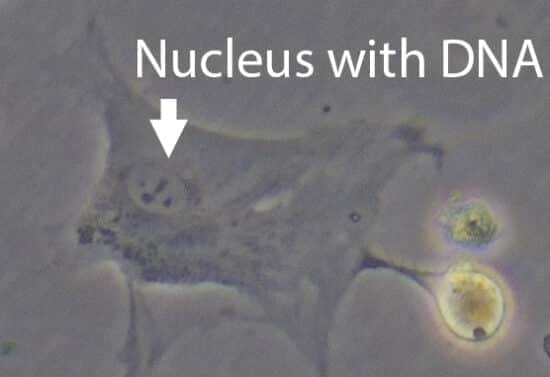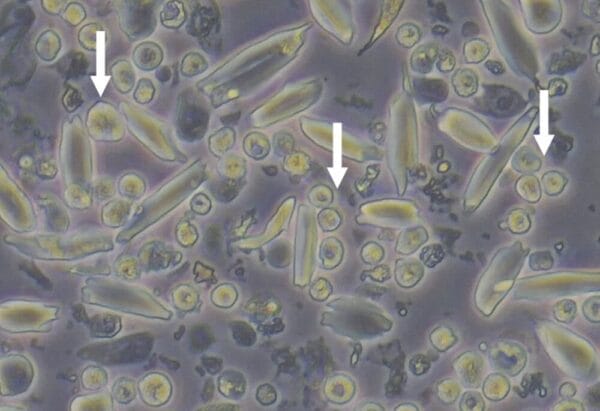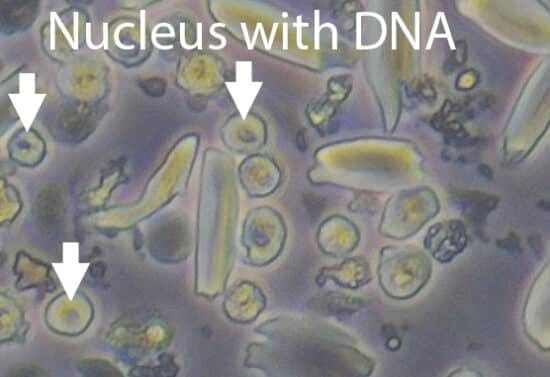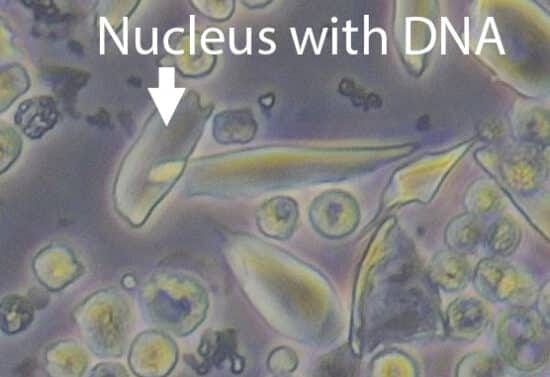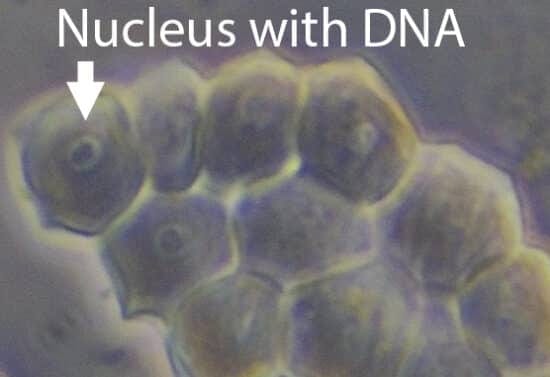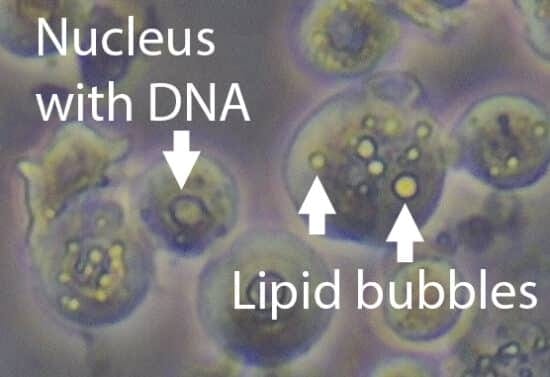Cell Types
On This Page:
Cellstones™ are truly unique because they contain cells from a loved one, making jewelry deeply personal and one of a kind. But cells are not just generic building blocks—for humans, there are about 200 different types known today, and for none do we yet fully understand how they work in detail. Cells are, without a doubt, one of the most complex entities on our planet.
Each cell type has its own “profession,” much like a plumber, doctor, or carpenter in society. For example, liver cells, heart cells, and skin cells are each specialized for unique roles. Even within a single type, like skin cells, there are variations with slightly different jobs, adding to the intricate complexity of Cellstones.
Cellstones can include multiple types of cells—see some examples below.
Cellstone Cell Types
Nickname: Mighty Spike cells
These are a type of mesenchymal stem cell (see white arrows) with a distinctive spiky appearance—hence our nickname "Mighty Spike." They attach to plastic surfaces and retain the remarkable ability to differentiate into various “professions,” such as nerve, muscle, bone, fat-related cells, and others. Once they commit to a specific role, they lose this flexibility. Additionally, these cells play a key role in tissue repair, regeneration, and immune system regulation.
Nickname: Kintama cells
These are a type of keratinocyte precursor cell (see white arrows) that retain some stem cell ability to further specialize in their profession. In the lab, they typically appear as golden balls—which inspired our nickname "Kintama," the Japanese word for golden ball—floating in liquid. They likely play a supportive role in maintaining hair. When present in dense numbers, they can form pentagonal keratinocyte sheets. This family of cells also contributes to skin formation.
Nickname: Splinter cells
These are another type of keratinocyte cell, named for their resemblance to wooden splinters. In the lab, they float in liquid and can appear in groups. These cells are located around the hair fiber and are believed to function as structural “bricks,” providing support and reinforcement.
Nickname: Honeycomb cells
Honeycomb cells are another type of keratinocyte. Not much is known about them, but in the lab, they are observed floating in liquid and always appear in groups or sheets. It is speculated they might be Kintama cells that are still joined together. In this configuration, they don’t have a golden shine compared to when they are alone. Furthermore, the nucleus of each cell can be clearly seen, with each containing a complete set of your DNA. However, whether they are really Kintama cells remains to be determined.
Nickname: Bubble cells
These cells contain lipid droplets that resemble bubbles, which is how they got their “creative” nickname. Little is known about them, their role within the hair root, or why they have these droplets. They might be connected to the sebaceous gland, which is a small factory in your skin that produces oils to keep your hair and skin healthy.
Don’t Risk Him/Her Feeling Anything Less Than Special—Create the World's Most Unique Ring and Jewelry with Cellstones.
The most important things in life are those you care about—your special somebody. With Cellstone jewelry, you can gift something truly one-of-a-kind, created from the essence of your being.



